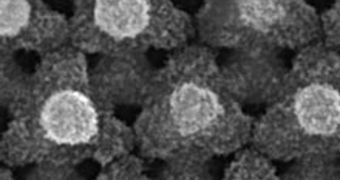Today, we are used to waiting for at least several hours for our gadgets to recharge their batteries. This is true for laptops, cell phones, tablet PC and mp3 players, among other devices. But experts say that, soon enough, batteries could recharge as fast as a couple of minutes.
A technology demonstrated recently showed that it's possible to build a lithium-ion battery that can be recharged to about 90 percent in as little as two minutes. This was made possible by the advanced materials that were used to manufacture it.
The speed at which batteries recharge is entirely dependent on the chemicals from which its electrodes are made of. In the new batteries, experts used nanostructured metal foams that are apparently capable of supporting very fast recharges.
Scientists behind the innovation are now still investigating whether it's possible to scale this method up to mass-production levels. If the technology can be commercialized, then we could soon have laptops that would take only a couple of hours to recharge.
At the same time, cell phone batteries could recharge in as little as 30 seconds. In addition, the new method is not applicable to lithium-ion batteries exclusively. Experts also applied it to nickel-metal-hydride batteries.
These devices are generally used to power up hybrid-drive and full-electric vehicles. Therefore, the innovation could allow for a quicker transition from the dirty fossil fuels used today to cleaner fuels.
The new research was led by experts at the University of Illinois in Urbana-Champaign (UIUC). The team was coordinated by materials science and engineering professor Paul Braun, Technology Review reports.
What the group did was fashion a highly-porous type of metal foam, which they then coated with a large amount of active battery materials. The porousness of the material enables high conductivity, but also the capability to store a lot of active battery materials.
Ionic movement within the metal foams is facilitated by the pores as well. Ions are electrically-charged atoms, whose movement patterns are tremendously important in batteries, experts say.
The new technology is “some distance to a product, but we have pretty good lab demos” with nickel-metal-hydride and lithium-ion batteries, Braun says, adding that tests conducted thus far were extremely encouraging.
“The performance they got is unprecedented,” argues University of Minnesota chemistry professor Andreas Stein, who was not a part of the new work. Details of the study were published in the latest issue of the esteemed journal Nature Nanotechnology.

 14 DAY TRIAL //
14 DAY TRIAL //